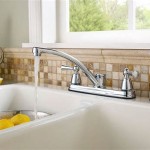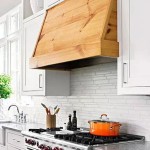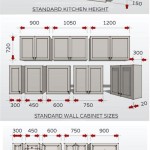Best Material For White Kitchen Sinks: A Comprehensive Guide
Choosing the right kitchen sink involves a careful consideration of material, functionality, and aesthetics. When it comes to white kitchen sinks, selecting the appropriate material is paramount to ensuring both its long-term durability and visual appeal. The market offers a variety of options, each with its own set of advantages and disadvantages. A thorough understanding of these characteristics is crucial to making an informed decision that aligns with individual needs and preferences.
The color white, in particular, presents unique challenges in kitchen sink materials. Its inherent brightness reveals imperfections and stains more readily than darker hues. Consequently, the chosen material must be capable of withstanding daily wear and tear, resisting discoloration, and maintaining its pristine appearance over time. This article will delve into the most popular materials for white kitchen sinks, examining their strengths, weaknesses, and suitability for various kitchen environments.
Stainless Steel: A Practical and Affordable Choice
Stainless steel is a widely recognized and frequently chosen material for kitchen sinks due to its affordability, durability, and resistance to staining and corrosion. When considering stainless steel for a white kitchen, it's vital to understand that the sink itself will not be white. Instead, stainless steel complements white cabinetry and countertops, providing a sleek and modern contrast. The reflective quality of stainless steel can also enhance the brightness of a white kitchen.
The gauge, or thickness, of the stainless steel is a crucial factor. A lower gauge number indicates a thicker, more durable sink. Ideally, a stainless steel kitchen sink should have a gauge of 16 or 18. Thinner gauges, such as 20 or 22, are more prone to denting and warping. Additionally, the type of stainless steel is important. 304-grade stainless steel, containing 18% chromium and 8% nickel, is the most common and considered the best option for kitchen sinks due to its superior corrosion resistance.
While stainless steel is relatively easy to clean, it is susceptible to water spots and fingerprints. Regular cleaning with a mild detergent and a soft cloth can help maintain its shine and prevent the build-up of unsightly marks. Abrasive cleaners should be avoided as they can scratch the surface. While not white itself, its neutral tone makes it a well-suited accomplice to white cabinetry and countertops.
Fireclay: A Classic and Durable Option
Fireclay sinks are crafted from clay fired at extremely high temperatures, resulting in a dense, durable, and non-porous material. This intense firing process vitrifies the clay, making it resistant to scratches, chips, and stains. Fireclay is a popular choice for white kitchen sinks due to its classic aesthetic and ability to withstand heavy use. Its smooth, glossy surface is relatively easy to clean and maintain.
The manufacturing process of fireclay sinks can lead to slight variations in size and shape. Therefore, it is essential to consult with a professional installer to ensure a proper fit. The weight of fireclay sinks is also a significant consideration. The sink base cabinet must be adequately reinforced to support the sink's substantial weight, especially when filled with water.
While fireclay is highly durable, it is not entirely impervious to damage. Heavy pots and pans dropped into the sink can potentially cause chipping. A sink grid can be used to protect the bottom of the sink from scratches and impacts. Regular cleaning with a non-abrasive cleaner is recommended to maintain its pristine white appearance. Fireclay stands as a premium choice for homeowners seeking a durable and aesthetically pleasing white kitchen sink.
Granite Composite: A Modern and Versatile Material
Granite composite sinks are engineered from a blend of granite stone dust and acrylic resins. This combination creates a material that is exceptionally durable, heat-resistant, and resistant to stains. Granite composite sinks are available in a wide range of colors, including various shades of white and off-white, offering homeowners greater design flexibility.
One of the key advantages of granite composite sinks is their non-porous surface. This prevents the absorption of liquids and bacteria, making them highly hygienic and easy to clean. They are also resistant to scratches, chips, and fading, ensuring their long-term beauty. Granite composite sinks are available in both undermount and drop-in styles, providing versatility in installation options.
The quality of granite composite sinks can vary depending on the ratio of granite to resin. Sinks with a higher granite content tend to be more durable and resistant to staining. It is important to choose a reputable manufacturer to ensure the sink meets established quality standards. While generally stain-resistant, highly pigmented liquids such as red wine or coffee should be wiped away promptly to prevent potential discoloration. Granite composite offers a modern and durable solution for those desiring a true white sink with excellent performance characteristics.
Quartz Composite: Similar Performance with a Different Composition
Quartz composite, much like granite composite, is a manufactured material that blends quartz particles with acrylic resins. The resulting product shares many of the benefits of granite composite, including exceptional durability, heat resistance, and stain resistance. Quartz composite sinks are also available in various shades of white, allowing for seamless integration into a white kitchen design.
The non-porous nature of quartz composite makes it resistant to bacterial growth and easy to clean. Its inherent strength withstands everyday wear and tear, including scratches and chips. The color is consistent throughout the material, so minor scratches are less noticeable compared to sinks with a surface coating. Quartz composite sinks are a popular choice for homeowners seeking a low-maintenance and aesthetically pleasing option.
While durable, quartz composite can be susceptible to damage from extreme temperature fluctuations. Avoid placing extremely hot pots and pans directly into the sink without using a trivet or letting water run. Similar to granite composite, prompt cleaning of spills, especially those containing strong pigments, is recommended. Quartz composite is a strong contender for those seeking a durable and easy-to-maintain white kitchen sink.
Enameled Cast Iron: A Timeless but Delicate Choice
Enameled cast iron sinks consist of a cast iron base coated with a layer of porcelain enamel. This combination provides a durable and heat-resistant sink with a classic aesthetic. Enameled cast iron sinks are available in a range of colors, including white, and offer a timeless appeal to many kitchen designs. The weight of cast iron contributes to its stability and reduces noise from running water.
While the cast iron base is exceptionally strong, the enamel coating can be susceptible to chipping and scratching. Sharp objects and abrasive cleaners should be avoided to prevent damage. Dark metal marks can also occur from pots rubbing against the enamel surface, although these can often be removed with specialized cleaners designed for porcelain. Despite these vulnerabilities, with proper care, enameled cast iron sinks can provide years of reliable use.
Enameled cast iron sinks are heavy and require a sturdy sink base cabinet for support. Installation can be more complex compared to lighter materials. The glossy surface of the enamel is easy to clean with mild soap and water. Enameled cast iron presents a classic and durable, although somewhat more delicate, option for a white kitchen sink.
Acrylic: A Budget-Friendly and Lightweight Option
Acrylic sinks are made from a synthetic plastic material that is lightweight, affordable, and relatively easy to install. They are available in a wide range of colors, including white, and can be molded into various shapes and sizes. Acrylic sinks are a budget-friendly option for homeowners looking to update their kitchen without breaking the bank.
While acrylic sinks are less expensive than other materials, they are also less durable. They are prone to scratching, staining, and melting under high heat. Acrylic sinks can also flex slightly when filled with water, which can cause noise and instability. Reinforcements can be used to mitigate some of these shortcomings, but the material fundamentally lacks the robustness of other options.
Cleaning acrylic sinks requires gentle methods to avoid scratching the surface. Abrasive cleaners and scouring pads should be strictly avoided. While stains can occur, they can often be removed with specialized acrylic cleaners. Due to its limitations, acrylic is typically not the best choice for high-use kitchens where durability is a primary concern. However, given its affordability and lightweight nature, acrylic sinks may be suitable for secondary kitchens or situations where budget is the paramount consideration.
Ultimately, the best material for a white kitchen sink depends on a variety of factors, including budget, lifestyle, and aesthetic preferences. Stainless steel offers a practical and affordable option, while fireclay provides a classic and durable choice. Granite composite and quartz composite offer modern and versatile solutions with excellent performance characteristics. Enameled cast iron provides a timeless appeal, but requires careful maintenance. Acrylic sinks are a budget-friendly option but are less durable than other materials. A comprehensive evaluation of these materials, considering the specific needs of the kitchen, is crucial to selecting the most appropriate white kitchen sink.

Which Kitchen Sink Material Is Best Stonecover Quartz Surfaces

How To Choose From 10 Of The Best Materials For Kitchen Sink Kkr

Why Is Porcelain The Best Material For Your Kitchen Sink Lx Hausys

How To Choose The Best Material For Your Kitchen Sink Tap Warehouse

What Sink Material Is Best For Your Mn Kitchen Remodel Lake Country Builders

What Are The Most Durable Kitchen Sink Materials These 7 Best Ranked Hunker

Choosing Kitchen Sinks Which Material Is Best

Kitchen Sink Designs How To Choose A For The

Ce Center

Explore The Best Material For A Kitchen Sink Cosentino








